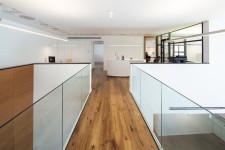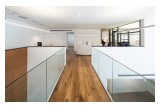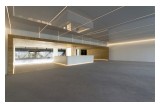Alcon Lighting Details the Health Benefits of Sunlight and How LED Lighting Compares

New York, NY, May 2, 2017 (Newswire.com) - According to studies published in Lighting Research & Technology and Energy and Buildings, spaces featuring daylight-sensing controls can reduce the energy used for electric lights by 20–60 percent when utilized correctly.
But, natural lighting has more benefits than just conserving energy. According to Architectural Lighting Magazine, daylighting offers many aesthetic and health benefits, including increasing occupant productivity and comfort while providing the stimulation needed to regulate human circadian rhythms – or the internal body clock. According to Psychology Today, those who are exposed to natural light during work hours sleep an average of 46 minutes more per night than those who do not.
LED Lighting
It’s well-known that LED bulbs boast long lifespans and consume less power than incandescent bulbs — sometimes as much as 90 percent less. And while LED bulbs come in a variety of brightness levels, including a daylight variation, multiple studies have shown natural light improves the mood and productivity amongst employees, and high (90+) CRI LED Lighting with color temperatures ranging from 5200K – 6400K is the closest artificial lighting can come to natural sunlight.
The Similarities Between LEDs and Sunlight
Believe it or not, LED lights have a lot in common with sunlight. LEDs can mimic the hue and intensity of natural sunlight and help to maintain the human body’s natural circadian rhythm. This is because LED components allow for finer adjustments of color, brightness and intensity.
According to a recent article in The Wall Street Journal, some homes are being equipped with LED lighting that automatically mimics sunlight by changing from soft, warm amber in the morning to bright, cool white during the day and then back to amber in the evening. Researchers said this helps counteract the disruptive effect of conventional artificial lighting on the body’s circadian rhythms.
Maximizing Daylighting
To execute daylighting correctly, excessive glare and temperature increases due to solar heat gain must be taken into consideration. Both of these factors can be detrimental to occupants if not handled correctly. Installing automated shades or dynamic glazing, which automatically tints to maximize natural light while reducing heat and glare, can curb these issues.
Want happier, more productive workers? Consider incorporating natural lighting or LED Linear Suspension Lighting into your next office makeover.
Source: Language of Light Blog




